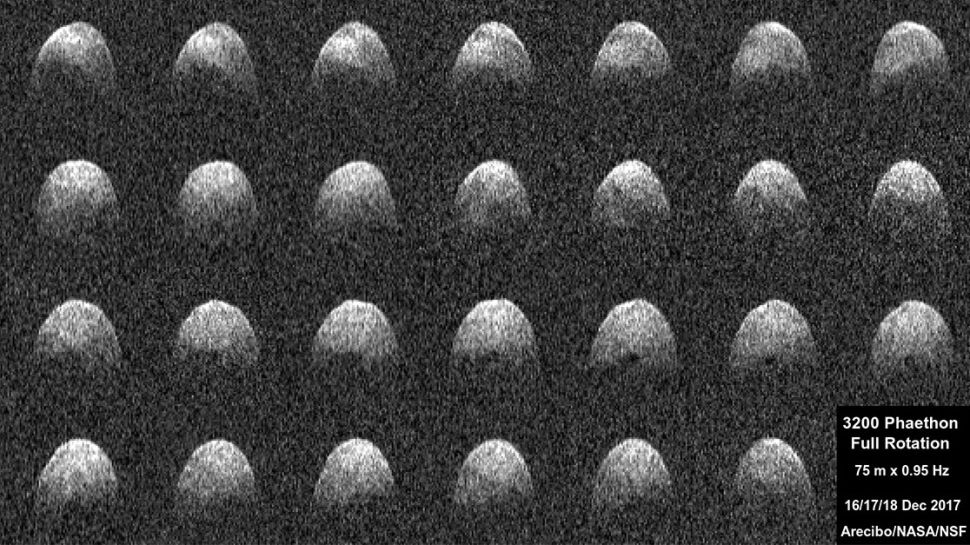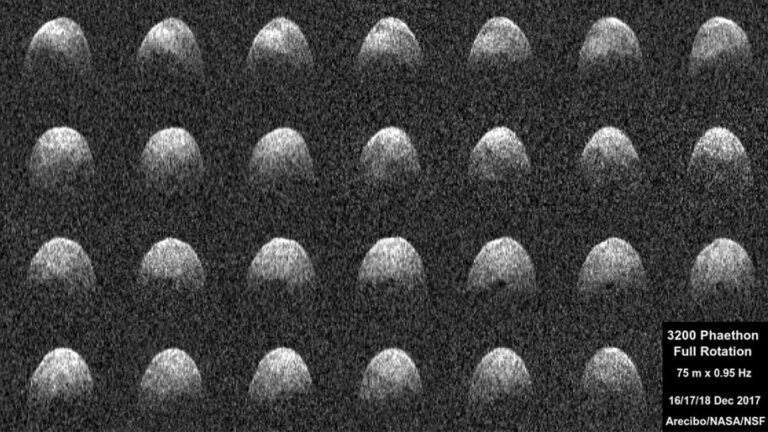Strange information concerning the ‘possibly dangerous’ asteroid Phaethon was uncovered by astronomers.
Phaethon is just the 11th known asteroid to demonstrate a changing rotational period.
This “possibly dangerous” asteroid has been thoroughly investigated in the run-up to the Japan Aerospace Exploration Agency’s DESTINY+ mission to the near-Earth asteroid Phaethon, which is scheduled to launch in 2024 and fly by the space rock in 2028.
Phaethon’s rotation is speeding faster, according to a recent observation made by researchers. The rotating period of the asteroid is getting shorter by 4 milliseconds annually. The DESTINY+ observations might be impacted by even a little alteration like this. The researchers can be more precise with their observations since they can estimate the asteroid’s orientation during the spacecraft’s flyby with more accuracy thanks to knowing the precise spin rate.

An asteroid’s spin seldom changes; Phaethon, the biggest of those space rocks with an average diameter of 3.4 miles, is only the 11th known asteroid to exhibit a variation in its rotating period (5.4 kilometers).
Sean Marshall, a planetary scientist at the Arecibo Observatory in Puerto Rico, developed a model to ascertain the form of Phaethon in advance of the DESTINY+ mission using data and observations from 1989 to 2021.
Marshall stated in a statement that “the projections from the shape model did not match the evidence.” “The moments when Phaethon was really observed to be brightest were plainly out of phase with the times when the model was brightest. I came to understand that this may be explained by Phaethon’s rotation period shifting slightly before the 2021 measurements, possibly as a result of comet-like activity in December 2020 when it was close to perihelion, the point in its orbit where it is closest to the sun.”
With regard to the 4 milliseconds per year rotational period of Phaethon, Marshall found that the model that best explained the data contained continuous rotational acceleration.
Since Phaethon’s orientation at the time of the spacecraft’s approach can be anticipated with accuracy thanks to a constant change, Marshall said, “this is wonderful news for the DESTINY+ team, since they will know which portions will be lighted by the sun.”
Phaethon is still a mystery to scientists, but the DESTINY+ mission will undoubtedly shed additional light. We do, however, know that despite Phaethon’s size and proximity to Earth qualifying it as a potentially dangerous asteroid, experts have concluded that it does not now represent a threat to our planet.
In London, Ontario, earlier this month, the researchers presented their findings at the 54th annual conference of the American Astronomical Society’s Division for Planetary Sciences.
Do not forget to share your opinion with us to provide you with the best posts !




0 Comments